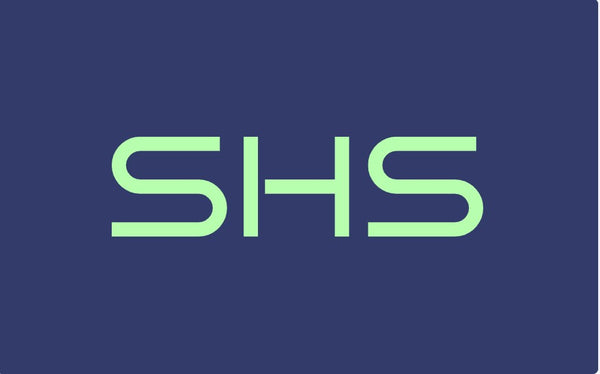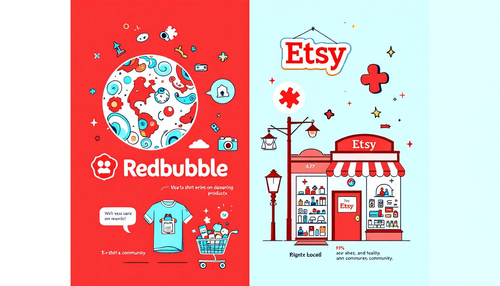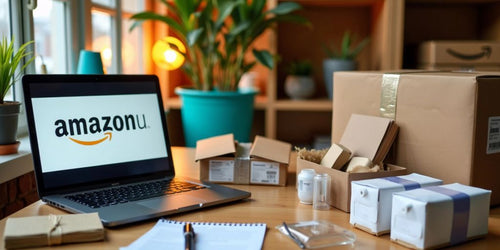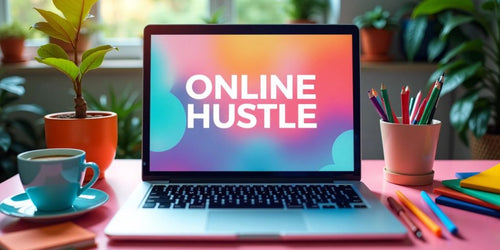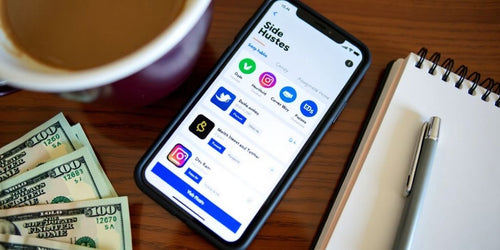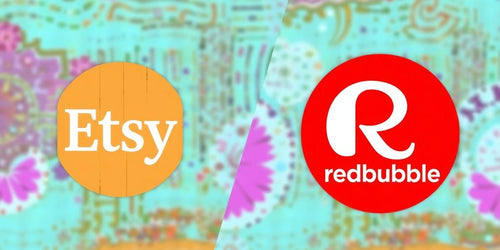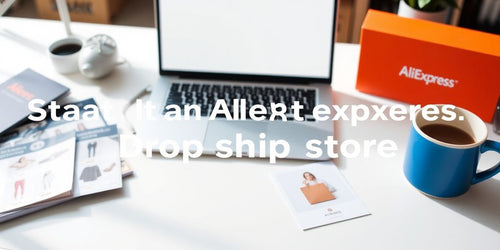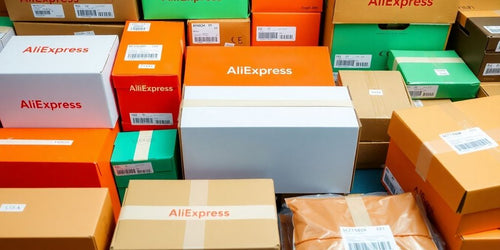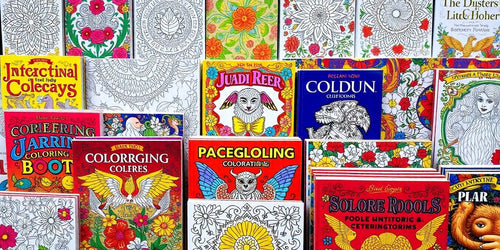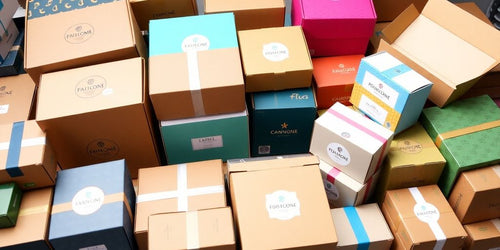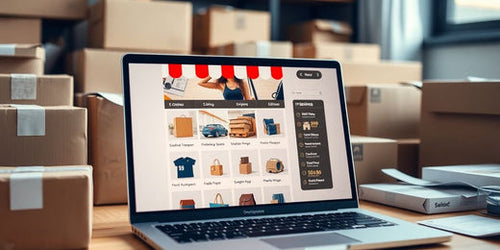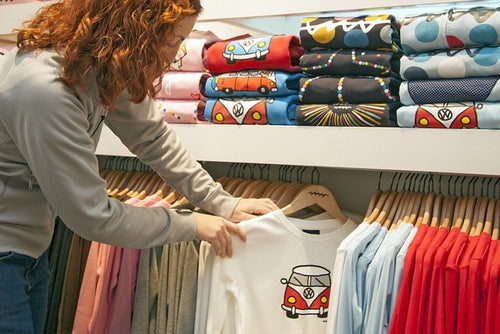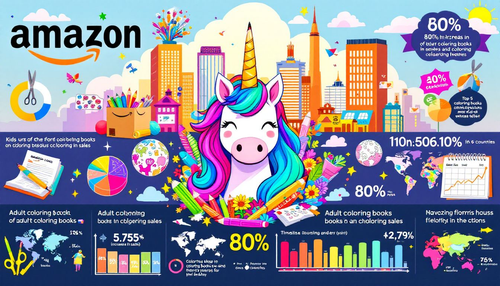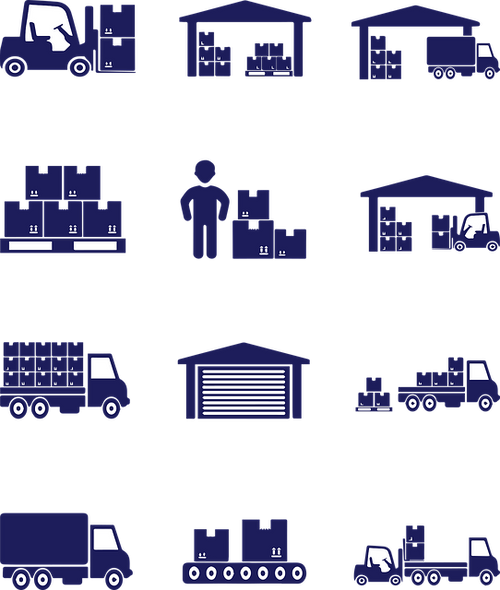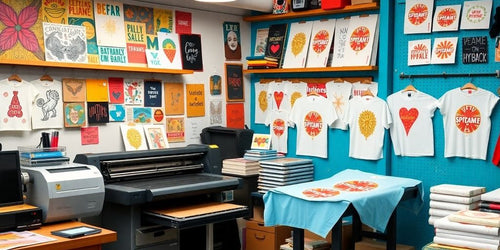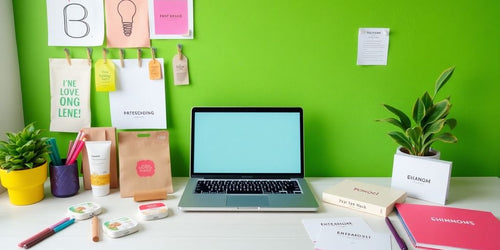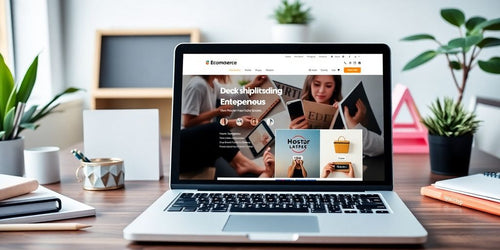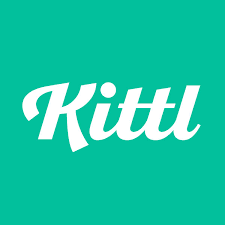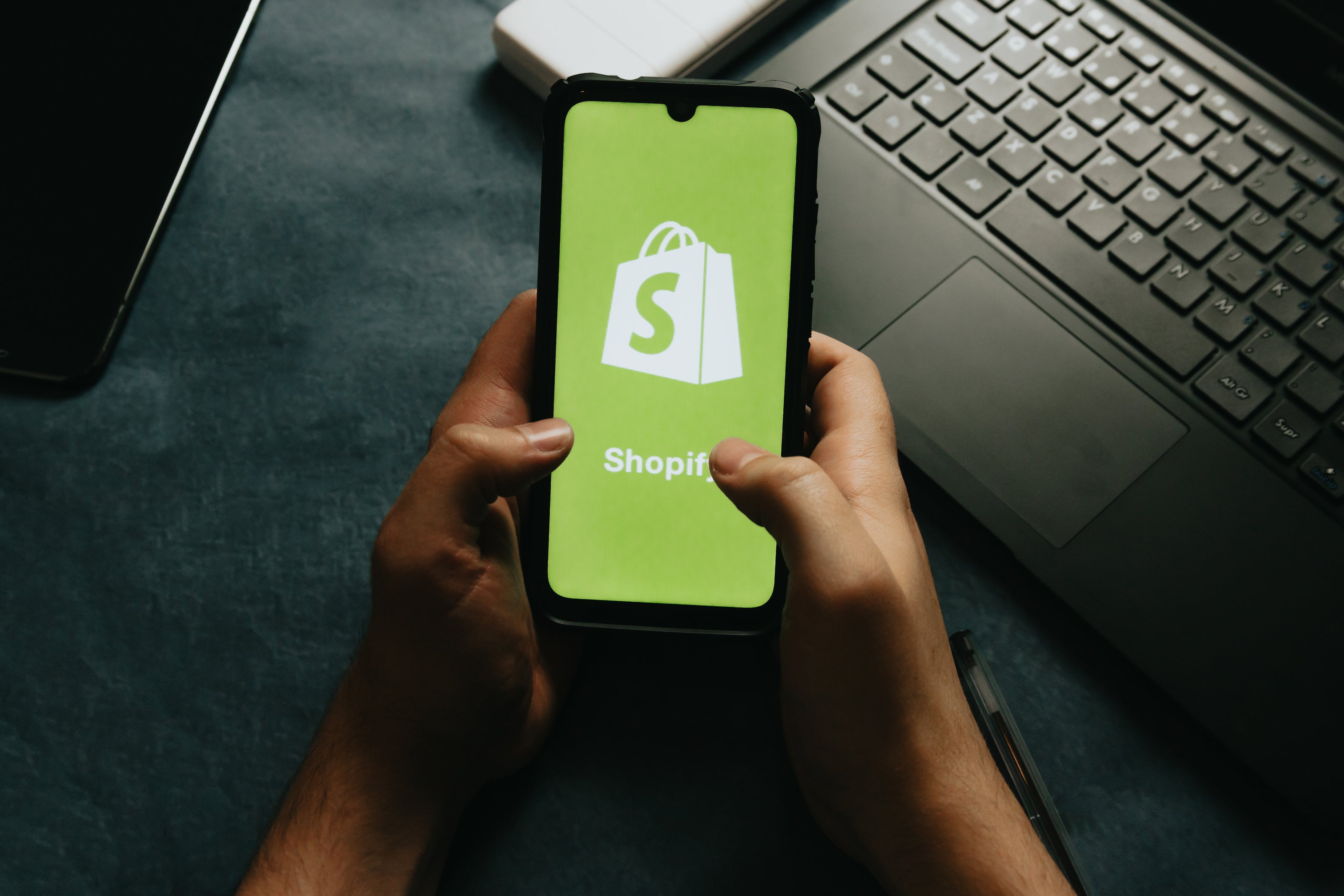
The Best Guide to Selling Print on Demand for Beginners
Share
Selling Prints on Amazon, Etsy and Guide of Print-On-Demand Products and Partners
Print-on-demand (POD) has transformed the way entrepreneurs and artists bring their designs to life. Digital art, in particular, has seen impressive commercial success in the context of print on demand due to its low overhead costs and high demand. By eliminating the need for inventory, POD allows creators to focus on designing and marketing while leaving production and fulfillment to a third party. However, choosing where to sell your POD products is just as critical as selecting a POD partner. The platform you choose will impact your audience reach, branding, profit margins, and more. Establishing an online business on platforms like Amazon can significantly enhance your marketing opportunities and streamline operations for selling POD products. In this detailed guide, we’ll compare and contrast popular platforms for selling POD products including Amazon FBM, Amazon Merch, Etsy, Society6, Fine Art America, Redbubble, TeeSpring, TeePublic, and eBay.

What is Print on Demand?
Print on demand (POD) is a revolutionary business model that allows you to create and sell custom products without the need to hold any inventory. Essentially, you design and market your products, and a third-party supplier takes care of the production and shipping directly to your customers. This model eliminates the need for upfront inventory costs, making it an attractive option for entrepreneurs and small businesses looking to sell products online. Whether you’re an artist wanting to sell art prints or a designer looking to launch a line of custom apparel, POD offers a flexible and low-risk way to bring your creations to market.
Selling print on demand products comes with a host of benefits that make it an appealing choice for many online businesses:
- Low Overhead Costs: Since you don’t need to invest in inventory, you save on storage and upfront costs. This makes it easier to start your business with minimal financial risk.
- Flexibility: POD allows you to offer a wide range of products, from t-shirts and hoodies to mugs and phone cases, without the need to manage physical stock.
- Scalability: As your business grows, you can easily scale your production. Your print on demand company handles the increased demand, so you don’t have to worry about inventory management.
- Reduced Risk: With no inventory to hold, you’re not at risk of being stuck with unsold products. This means you can experiment with different designs and products without significant financial consequences.
- Market Research: Conducting market research is crucial for identifying profitable niches and design ideas. Utilize online tools and platforms like Facebook, Instagram, Google Trends, and market research tools such as Semrush or BuzzSumo to gather insights into consumer preferences and popular topics within specific market segments.
These benefits make print on demand an ideal model for creative entrepreneurs looking to sell art and other custom products online.
Choosing a Print on Demand Provider
Selecting the right print on demand supplier is crucial for the success of your online store. Here are some key factors to consider:
- Product Range: Look for a provider that offers a wide variety of products, including the specific types you want to sell. This ensures you can diversify your offerings and attract a broader audience.
- Quality: The quality of the products and the printing process is paramount. Ensure the provider meets your standards to maintain customer satisfaction and brand reputation.
- Pricing: Compare prices among different providers to ensure you’re getting the best deal. Consider both the base cost of products and the shipping fees.
- Integration: Choose a provider that integrates seamlessly with your online store or marketplace. This makes it easier to manage your products, orders, and inventory.
- Customer Service: Good customer service is essential. Look for a provider that offers reliable support in case you need help with orders or have questions about the products.
Popular print on demand providers include Printful, Printify, and Amazon Merch on Demand. Each has its own strengths and weaknesses, so take the time to research and compare them to find the best fit for your business needs. By choosing the right provider, you can ensure a smooth and efficient operation for your print on demand business.
Amazon FBM (Fulfilled by Merchant)

Overview
Amazon FBM allows sellers to list their products on Amazon but handle the fulfillment themselves. Amazon Seller Central is the platform used for managing sales on Amazon. For POD sellers, this means you list your products on Amazon, but your POD partner prints and ships the items directly to your customers.
Registering for a Professional Seller Account provides several advantages, including access to the Amazon Marketplace Web Service, which allows for easier integration with print-on-demand suppliers and streamlines the sales process on the Amazon platform.
Pros
- Massive Audience: Amazon is the largest e-commerce platform globally, offering access to millions of potential customers. By leveraging Amazon's massive audience, you can effectively attract customers and boost sales by identifying a specific niche and focusing on popular or unique product offerings.
- Brand Control: You maintain control over your branding and product listings.
- Prime Eligibility: While you handle fulfillment, you can still qualify for Amazon Prime if you meet specific criteria, increasing your sales potential.
Cons
- Competition: The marketplace is highly competitive, with many sellers often offering similar products.
-
Fees: Amazon’s selling fees can be high, cutting into profit margins.
- Monthly Fee: A Professional Seller Account on Amazon incurs a monthly fee of $39.99. While this fee grants sellers additional privileges such as the ability to create unlimited listings and access to Amazon Marketplace Web Service, it can impact profit margins, especially for new or small-scale sellers.
- Customer Expectations: Amazon customers have high expectations regarding shipping times and customer service.
Step-by-Step Guide to Selling on Amazon FBM with Amazon Seller Account
- Create an Amazon Seller Account: Choose between an Individual or Professional seller account.
- List Your Products: Upload your product details, including descriptions, images, and pricing. If you are looking to sell print-on-demand products, ensure you highlight the unique designs and benefits; this will help attract specific audiences and improve your chances to sell print items effectively on Amazon.
- Integrate with POD Partner: Ensure your POD partner can fulfill Amazon orders efficiently.
- Manage Orders: Monitor your Amazon account regularly to fulfill orders promptly and respond to customer inquiries.
- Optimize Listings: Use Amazon SEO strategies to improve your product’s visibility on the Amazon store.
Amazon Merch

Overview
Amazon Merch, also known as Merch by Amazon, is a POD service where Amazon handles everything - from printing to shipping, Amazon Merch is one of the leading print on demand companies. You upload your designs, set your prices, and Amazon takes care of the rest - this makes it an excellent option for selling art online through Amazon Merch.
Pros
- Hands-Off Fulfillment: Amazon handles printing, shipping and customer service.
- No Upfront Costs: There are no fees to join or maintain your account.
- Prime Eligible Products: All Merch by Amazon products are eligible for Prime shipping, increasing your chances of making sales.
Cons
- Invitation Only: Currently, you need to apply and be approved to join the program, which can be restrictive.
- Limited Control: Amazon sets many of the rules, including product pricing and availability.
- Competition: With a large number of designers on the platform, standing out can be challenging.
Step-by-Step Guide to Selling on Amazon Merch

Amazon Merch, also known as Merch by Amazon, is a popular platform for selling custom-designed apparel, allowing creators to reach millions of potential customers on Amazon without managing inventory. Here’s a step-by-step guide to help you navigate the process of selling on Amazon Merch.
- Apply for an Invitation Start by visiting the Merch by Amazon page and requesting an invitation. Amazon limits the acceptance of new accounts, only allowing new sellers at certain times, which are not publicly known. Be persistent in applying, and consider reapplying with a different email address if your application is rejected. Once accepted, you’ll gain access to the Merch dashboard, where you can upload designs and manage your product listings.
- Conduct Keyword Research. Effective keyword research is essential for standing out in a competitive market. Identify relevant keywords for your specific niche and design themes. Look for long-tail keywords—these are specific phrases that may have slightly lower search volume but also less competition, increasing the chance that customers find your products. Tools like Amazon’s Keyword Tool or Helium 10 can be useful for finding high-impact keywords.
- Upload Your Designs. Once your invitation is accepted, start by uploading your custom designs to your Amazon Merch account. Merch by Amazon allows a variety of product types, including t-shirts, hoodies, tank tops, and sweatshirts. Make sure your designs are high-resolution and follow Amazon’s design guidelines to ensure they look great across product types and sizes.
- Set Your Pricing. With Amazon Merch, you have control over your pricing and royalties. After uploading a design, set a price that aligns with similar products while considering your target profit margin. Amazon provides a royalty calculator, allowing you to see your estimated earnings per sale. Keep in mind that pricing competitively can help you attract more buyers, but you’ll need to balance this with your desired royalty earnings.
-
Publish and Promote Your Products.
After your products are listed on Amazon, you can start promoting them to drive sales. Here are some effective ways to market your Amazon Merch products: - Optimize Product Listings: Use relevant keywords in the product title and description to improve your product’s visibility on Amazon’s search results.
- Social Media Promotion: Share your designs on social media platforms like Instagram, Facebook, and Pinterest to reach a larger audience. Consider using targeted hashtags and partnering with influencers if possible.
- Run Amazon Ads: Amazon offers advertising options, such as Sponsored Products, that can boost visibility. Running ads can be especially helpful for newly listed products or items in highly competitive niches.
Selling on Merch by Amazon can be a lucrative opportunity, allowing you to reach Amazon’s extensive customer base with minimal upfront investment. By following these steps and focusing on consistent quality and effective promotion, you can build a successful Merch business on Amazon.
Etsy

Overview
Etsy is a well-known marketplace for handmade, vintage, and unique products. It has become a popular platform for POD sellers, particularly those offering custom and artistic designs. The growth of the online art market has further emphasized Etsy's relevance, providing new opportunities for artists to connect with customers.
Pros
- Niche Audience: Etsy attracts shoppers looking for unique, handcrafted, or customized items, which aligns well with POD products.
- Creative Control: Sellers have significant control over their branding, shop design, and pricing.
- Customization Options: Etsy allows for personalized orders, which can be a big draw for customers.
Cons
- Fees: Etsy charges listing fees, transaction fees, and payment processing fees, which can add up.
- Competition: With over 7.5 million active sellers, standing out can be difficult.
- Marketing Required: Etsy has a built-in audience, but successful sellers often need to invest in marketing to drive traffic to their online stores.
Step-by-Step Guide to Selling on Etsy

- Create an Etsy Shop: Sign up for an Etsy account and set up your shop with a unique name and branding.
- List Your Products: Add your POD products, including detailed descriptions and high-quality images.
- Set Up Shipping Profiles: Integrate your POD partner’s shipping options or set your rates.
- Promote Your Shop: Use Etsy Ads, social media, and other marketing strategies to drive traffic to your shop.
- Fulfill Orders: Coordinate with your POD partner to ensure orders are fulfilled quickly and accurately.
Society6

Overview
Society6 is a POD marketplace designed for artists and designers. It allows you to sell your designs on a wide range of products, including art prints, home decor, and accessories.
Pros
- Artist-Focused: Society6 is tailored for artists, offering a platform that showcases their work effectively and supports selling art through various online strategies
- High-Quality Products: Society6 is known for its premium product quality, which can justify higher pricing.
- Built-In Audience: Society6 has a community of art lovers who are specifically looking for unique designs.
Cons
- Limited Control: Society6 handles everything from pricing to fulfillment, leaving sellers with little control.
- Lower Profit Margins: Society6 sets the base prices, and your profit is determined by the markup you add.
- Less Customization: Compared to platforms like Etsy, there is less opportunity for custom orders.
Step-by-Step Guide to Selling on Society6
- Sign Up for an Account: Create an account on Society6 and set up your artist profile.
- Upload Your Artwork: Add your designs to Society6 and choose which products to apply them to.
- Set Your Markup: Society6 allows you to set the markup on art prints; for other products, prices are fixed.
- Promote Your Portfolio: Use social media, art communities, and Society6’s built-in tools to promote your work.
- Monitor Sales: Society6 handles fulfillment, so your main focus will be on promoting and expanding your portfolio.
Fine Art America

Overview
Fine Art America is a niche POD marketplace that specializes in fine art prints, home decor, and other high-end products. It’s a platform favored by artists and photographers. Understanding how to sell online through Fine Art America is crucial for maximizing profitability and market reach.
Pros
- High-Quality Products: Fine Art America is known for its premium prints and products, which appeal to discerning customers.
- Customization Options: You can offer various sizes, frames, and finishes, which allows for personalization.
- Artist Community: Fine Art America has a strong community of artists and buyers who appreciate fine art.
Cons
- Higher Costs: The premium nature of the products means that they are priced higher, which may limit your audience.
- Lower Profit Margins: Similar to Society6, Fine Art America sets the base prices, and your profit is determined by the markup.
- Less Control: You have limited control over how your products are presented and marketed on the platform.
Step-by-Step Guide to Selling on Fine Art America
- Create an Artist Account: Sign up on Fine Art America and complete your artist profile.
- Upload Your Art: Add your designs, choosing the types of products to feature them on.
- Set Your Prices: Determine your markup for each product category.
- Promote Your Art: Utilize Fine Art America’s marketing tools and your external networks to drive sales.
- Expand Your Portfolio: Regularly update your offerings to keep your portfolio fresh and appealing.
Redbubble

Overview
Redbubble is one of the most popular POD marketplaces, offering a wide variety of products and a large community of shoppers looking for unique designs.
Pros
- Wide Product Range: Redbubble offers a vast selection of products, from apparel to home decor, giving artists plenty of options to showcase their work.
- Global Reach: Redbubble ships worldwide, expanding your potential audience.
- No Upfront Costs: You only pay when a product is sold, making it a low-risk platform for artists.
Cons
- Lower Profit Margins: Redbubble sets the base prices, so your profits depend on the markup you add.
- Limited Customization: Redbubble handles all fulfillment and pricing, giving you less control over your shop.
- Intense Competition: With millions of designs available, standing out can be challenging.
Step-by-Step Guide to Selling on Redbubble
- Create a Redbubble Account: Sign up and set up your artist profile.
- Upload Your Designs: Add your artwork and apply it to different products.
- Set Your Markup: Choose your profit margin by adjusting the markup percentage.
- Promote Your Work: Use social media and Redbubble’s promotional tools to drive traffic to your designs.
- Monitor Your Sales: Keep track of your sales and earnings through the Redbubble dashboard.
TeeSpring (now Spring)

Overview
TeeSpring, rebranded as Spring, is a platform designed for creators looking to monetize their social media following. It allows you to create and sell custom products without any upfront costs.
Pros
- Integrated with Social Media: TeeSpring offers integrations with platforms like YouTube and Instagram, making it easy to promote your products directly to your followers.
- No Upfront Costs: You only pay when you make a sale, so there’s no financial risk.
- Easy to Use: The platform is user-friendly, making it easy to create and launch products quickly.
Cons
- Limited Product Range: Compared to other POD platforms, TeeSpring offers fewer product options.
- Dependent on Your Audience: Success on TeeSpring often depends on having an existing social media following.
- Lower Profit Margins: Similar to other POD platforms, your profit margins are dependent on the markup you add to the base price.
Step-by-Step Guide to Selling on TeeSpring

- Create an Account: Sign up on TeeSpring and connect your social media accounts.
- Design Your Products: Use TeeSpring’s design tools to create custom products.
- Launch Your Campaign: Publish your products and promote them to your social media audience.
- Monitor Sales: Track your sales and performance through the TeeSpring dashboard.
- Expand Your Offerings: Regularly introduce new products to keep your audience engaged.
TeePublic
Overview
TeePublic is a community-driven POD platform that specializes in apparel, art prints, and home goods. It’s similar to Redbubble but with a more niche focus on t-shirt designs.
Pros
- Community-Oriented: TeePublic has a strong community of designers and shoppers who appreciate unique, indie designs.
- No Upfront Costs: You only pay when you make a sale, making it a low-risk platform.
- Simple Pricing: TeePublic offers straightforward pricing, with the same base price for all products.
Cons
- Limited Product Range: TeePublic has a smaller selection of products compared to platforms like Redbubble.
- Lower Profit Margins: Similar to other POD platforms, profit margins are determined by the markup you add to the base price.
- Less Customization: TeePublic handles fulfillment and pricing, giving you less control over your shop.
Step-by-Step Guide to Selling on TeePublic
- Create an Account: Sign up and set up your TeePublic store.
- Upload Your Designs: Add your artwork and apply it to the available products.
- Promote Your Online Store: Use social media and other marketing strategies to drive traffic to your TeePublic shop.
- Monitor Sales: Keep track of your sales and earnings through the TeePublic dashboard.
- Engage with the Community: Participate in TeePublic’s community events and promotions to increase your visibility.
eBay

Overview
eBay is one of the oldest and largest online marketplaces, offering sellers the opportunity to reach a global audience. It’s a versatile platform where you can sell almost anything, including POD products.
Pros
- Massive Audience: eBay has a vast global audience, giving you access to millions of potential customers.
- Flexibility: You can sell new, used, or custom products, offering a high level of flexibility.
- Auction Options: eBay allows you to list products as auctions or fixed-price listings, giving you more control over pricing.
Cons
- Fees: eBay charges listing fees, final value fees, and payment processing fees, which can add up.
- High Competition: With millions of sellers, competition can be fierce, making it challenging to stand out.
- Customer Expectations: eBay buyers often expect fast shipping and responsive customer service, which can be demanding.
Step-by-Step Guide to Selling on eBay

- Create an eBay Seller Account: Sign up for an eBay account and choose a seller plan.
- List Your Products: Add your POD products, including detailed descriptions, images, and pricing.
- Integrate with POD Partner: Ensure your POD partner can fulfill eBay orders efficiently.
- Manage Listings: Regularly update and optimize your product listings to improve visibility.
- Fulfill Orders: Coordinate with your POD partner to ensure orders are fulfilled quickly and accurately.
Comparison Table
| Platform | Audience Size | Product Range | Fees | Customization | Profit Margins | Ease of Use |
|---|---|---|---|---|---|---|
| Amazon FBM | Extremely Large | Extensive | High Selling Fees | High | Moderate | Moderate |
| Amazon Merch On Demand | Extremely Large | Limited to Apparel | No Fees, Amazon Takes a Cut | Limited | Moderate | High |
| Etsy | Large and Niche | Extensive | Listing, Transaction Fees | High | High | Moderate |
| Society6 | Large and Artistic | Extensive | Society6 Takes a Cut | Limited | Lower | High |
| Fine Art America | Niche Artistic | Extensive | Fine Art America Takes a Cut | Limited | Lower | High |
| Redbubble | Large | Extensive | Redbubble Takes a Cut | Limited | Lower | High |
| TeeSpring (Spring) | Medium | Moderate | No Fees, TeeSpring Takes a Cut | Limited | Lower | High |
| TeePublic | Medium | Moderate | TeePublic Takes a Cut | Limited | Lower | High |
| eBay | Extremely Large | Extensive | Listing, Final Value Fees | High | High | Moderate |
Which Platform is Right for You?

The best platform for selling your POD products depends on your specific goals and resources:
- If you want to reach a massive audience with diverse product offerings: Amazon FBM or eBay might be the best fit.
- If you are an artist or designer looking for a community-focused platform: Society6 or Fine Art America are excellent choices.
- If you have a strong social media following and want to monetize it: TeeSpring (Spring) is designed specifically for this purpose.
- If you’re looking for an artist-friendly platform with a wide range of products: Redbubble or TeePublic could be ideal.
- If you want to sell custom, handmade-style items: Etsy offers the best environment for unique, artistic products.
- If you want to diversify your sales channels and build your brand: Having your own website allows you to mitigate risks associated with relying solely on a single platform and gives you full control over hosting and promoting your unique brand.
Conclusion
Selling POD products is a flexible and potentially lucrative way to monetize your designs, but the platform you choose plays a crucial role in your success. By carefully considering the features, pros, and cons of each platform, you can select the one that aligns best with your business goals and target audience. Whether you are selling prints on amazon, t-shirts on Etsy or focusing on niche art sales on Society6 or Fine Art America, there’s a platform out there that can help you turn your creative vision into a thriving business.
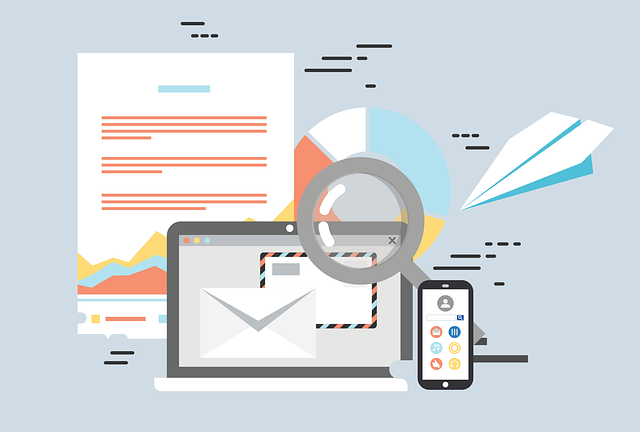
Frequently asked questions:
Is it possible to sell print on demand on Amazon?
Yes, you can sell print on demand products on Amazon through services like Amazon Merch on Demand and Amazon FBM. These platforms allow you to list your designs and have them printed and shipped directly to customers without holding inventory.
Can you sell printable products on Amazon?
While Amazon primarily focuses on physical products, you can sell printable items by offering them as physical prints or using platforms that support digital downloads, such as Etsy or your own website.
Can you make money selling prints?
Absolutely, selling prints can be a profitable venture, especially if you have unique and appealing designs. The key is to leverage platforms with large audiences, such as Amazon or Etsy, and effectively market your products to reach your target customers.
What is the best platform to sell prints on?
The best platform depends on your specific needs, target audience and print on demand products you wish to sell. Amazon offers a vast customer base, while Etsy is great for artistic and unique products. Platforms like Society6 and Redbubble cater specifically to artists looking to sell custom designs.
How to start selling print-on-demand products on Amazon?
To start selling print-on-demand products on Amazon, you'll need to create an Amazon Seller Account, list your products, and integrate with a POD partner for fulfillment. It's important to optimize your listings with relevant keywords and promote your products to attract potential customers.
Further Reading for your Print on Demand Business:
Is Print on Demand still viable in 2025
Print on Demand for Passive Income
Dropshipping vs Print on Demand
